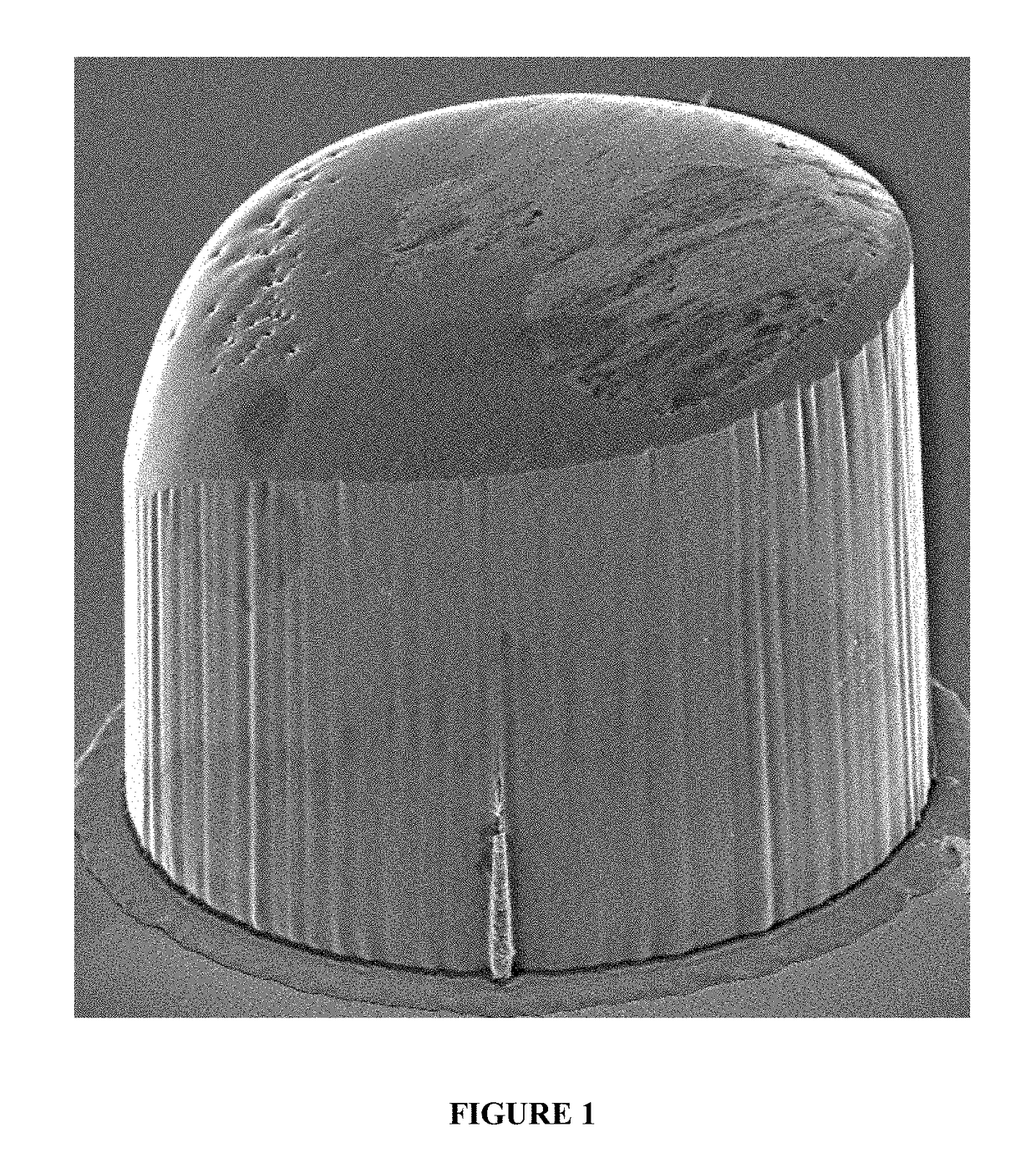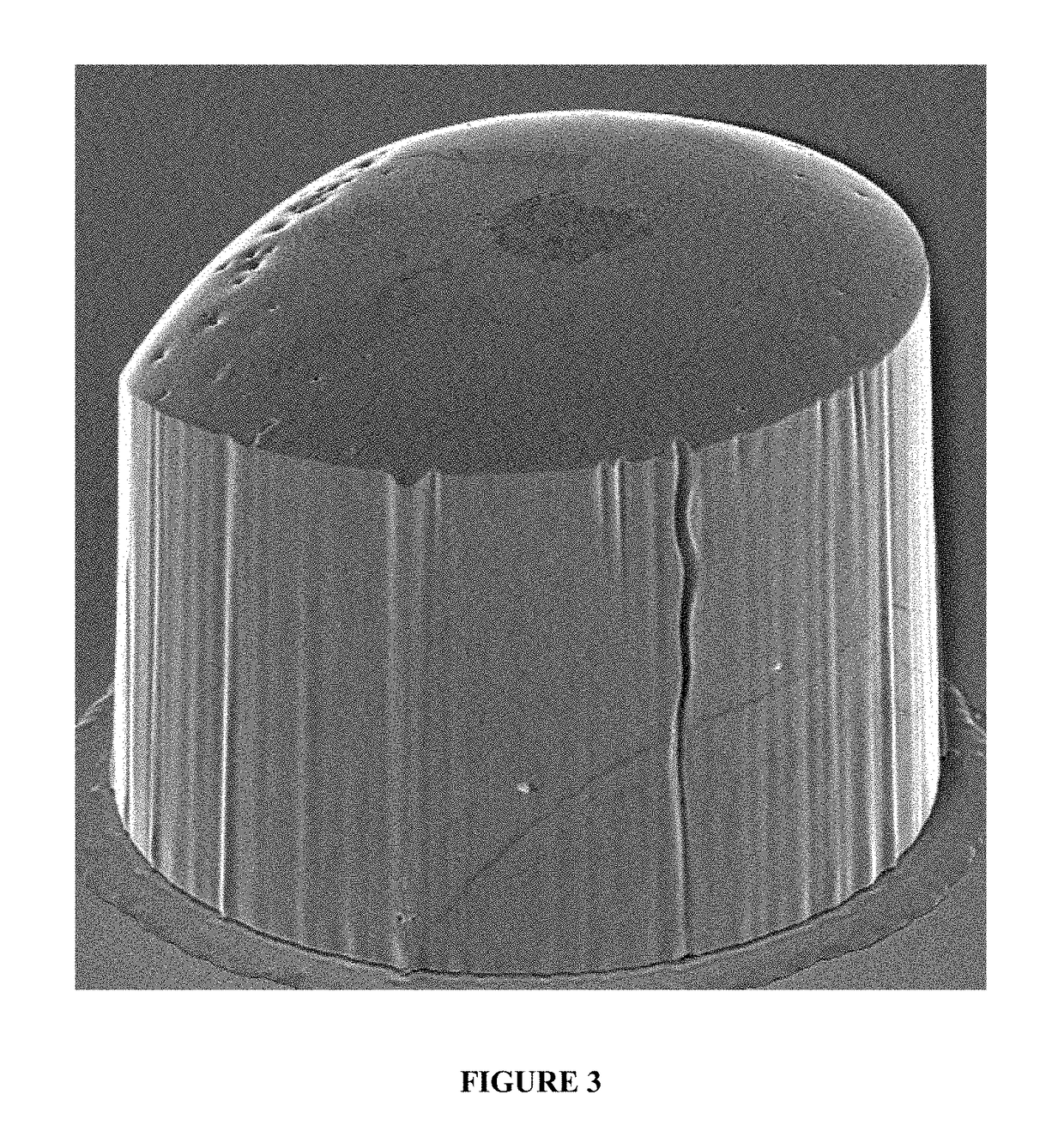Copper electroplating baths and electroplating methods capable of electroplating megasized photoresist defined features
- Summary
- Abstract
- Description
- Claims
- Application Information
AI Technical Summary
Benefits of technology
Problems solved by technology
Method used
Image
Examples
example 1
[0058]In 250 mL round-bottom, three-neck flask equipped with a condenser and a thermometer, 100 mmol of 2-aminobenzoic acid and 20 mL of deionized (“DI”) water were added followed by addition of 100 mmol of aqueous sodium hydroxide at room temperature and 100 mmol of 1,4-butanediol diglycidyl ether at 80° C. The resulting mixture was heated for about 5 hours using an oil bath set to 95° C. and then left to stir at room temperature for additional 6 hours. The reaction product (Reaction Product 1) was transferred into a container, rinsed and adjusted with DI water. The reaction product solution was used without further purification.
example 2
[0059]In 100 mL round-bottom, three0neck flask equipped with a condenser and a thermometer, 100 mmol of 2H-imidazole and 20 mL of DI water were added followed by addition of 100 mmol of epichlorohydrin. The resulting mixture was heated for about 5 hours using an oil bath set to 110° C. and then left to stir at room temperature for an additional 8 hours. An amber colored not-very viscous reaction product was transferred to a 200 mL volumetric flask, rinsed and adjusted with DI water to the 200 mL mark. The reaction product (Reaction Product 2) solution was used without further purification.
example 3
[0060]An aqueous acid copper electroplating bath was prepared by combining 60 g / L copper ions from copper sulfate pentahydrate, 60 g / L sulfuric acid, 90 ppm chloride ion, 12 ppm of an accelerator and 2 g / L of a suppressor. The accelerator was bis(sodium-sulfopropyl)disulfide. The suppressor was an EO / PO copolymer having a weight average molecular weight of around 1,000 and terminal hydroxyl groups. The electroplating bath also contained 10 ppm of Reaction Product 1 and 3 ppm of Reaction Product 2. The pH of the bath was less than 1.
[0061]A 300 mm silicon wafer segment with a patterned photoresist 240 μm thick and a plurality of vias (available from IMAT, Inc., Vancouver, Wash.) was immersed in the copper electroplating bath. The anode was a soluble copper electrode. The wafer and the anode were connected to a rectifier and copper pillars were electroplated on the exposed seed layer at the bottom of the vias. The via diameters were 200 μm. Current density during plating was 30 ASD an...
PUM
| Property | Measurement | Unit |
|---|---|---|
| Fraction | aaaaa | aaaaa |
| Fraction | aaaaa | aaaaa |
| Fraction | aaaaa | aaaaa |
Abstract
Description
Claims
Application Information
 Login to view more
Login to view more - R&D Engineer
- R&D Manager
- IP Professional
- Industry Leading Data Capabilities
- Powerful AI technology
- Patent DNA Extraction
Browse by: Latest US Patents, China's latest patents, Technical Efficacy Thesaurus, Application Domain, Technology Topic.
© 2024 PatSnap. All rights reserved.Legal|Privacy policy|Modern Slavery Act Transparency Statement|Sitemap



